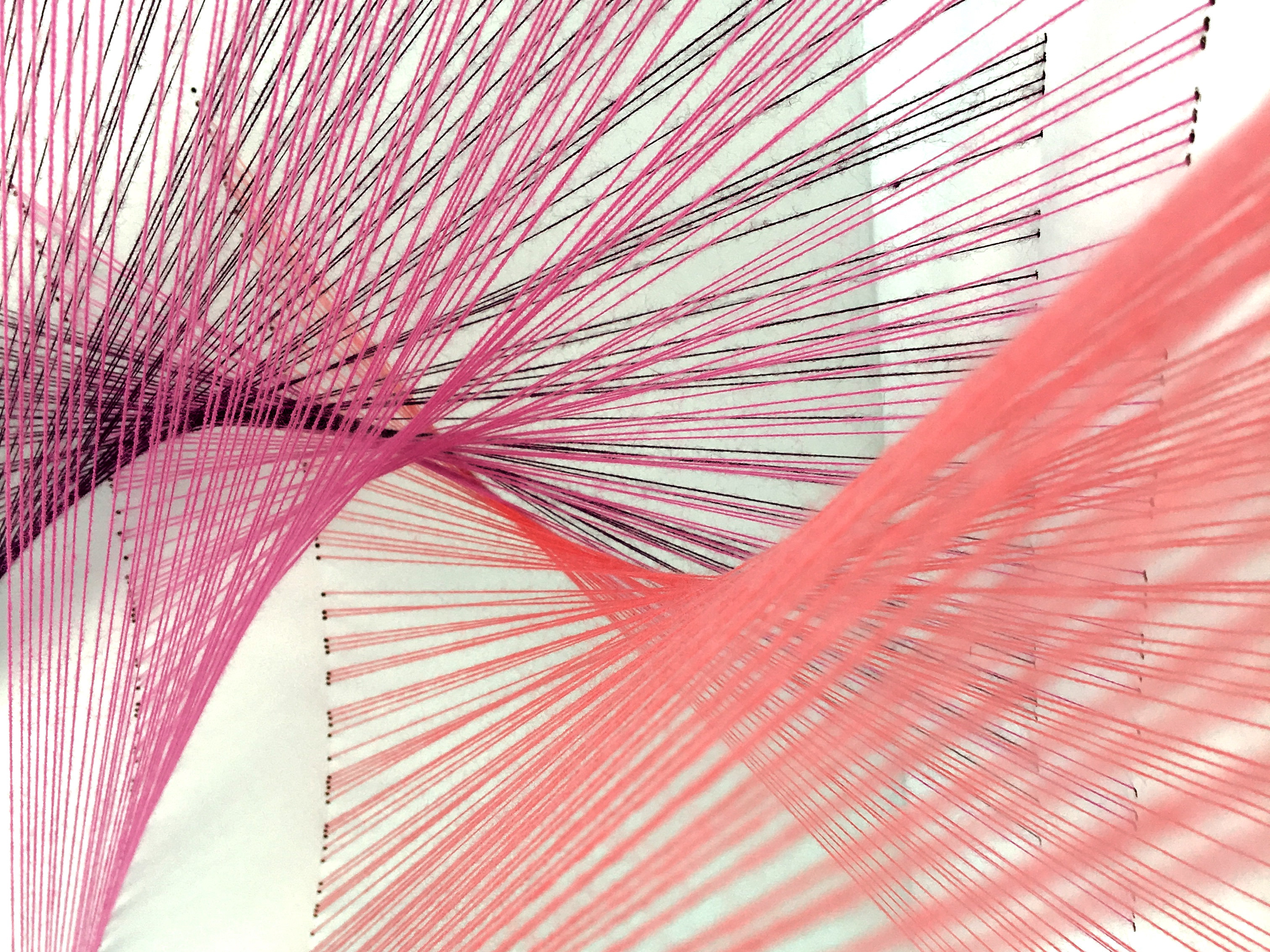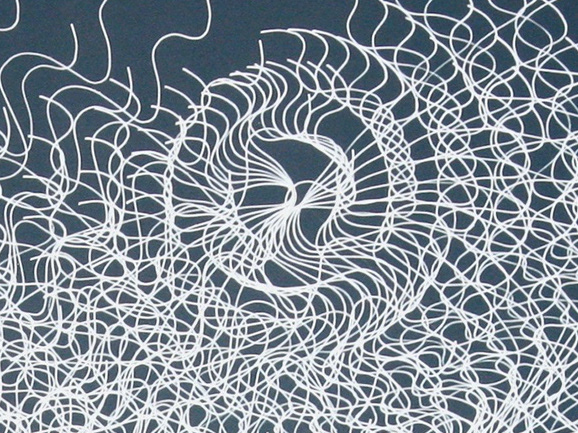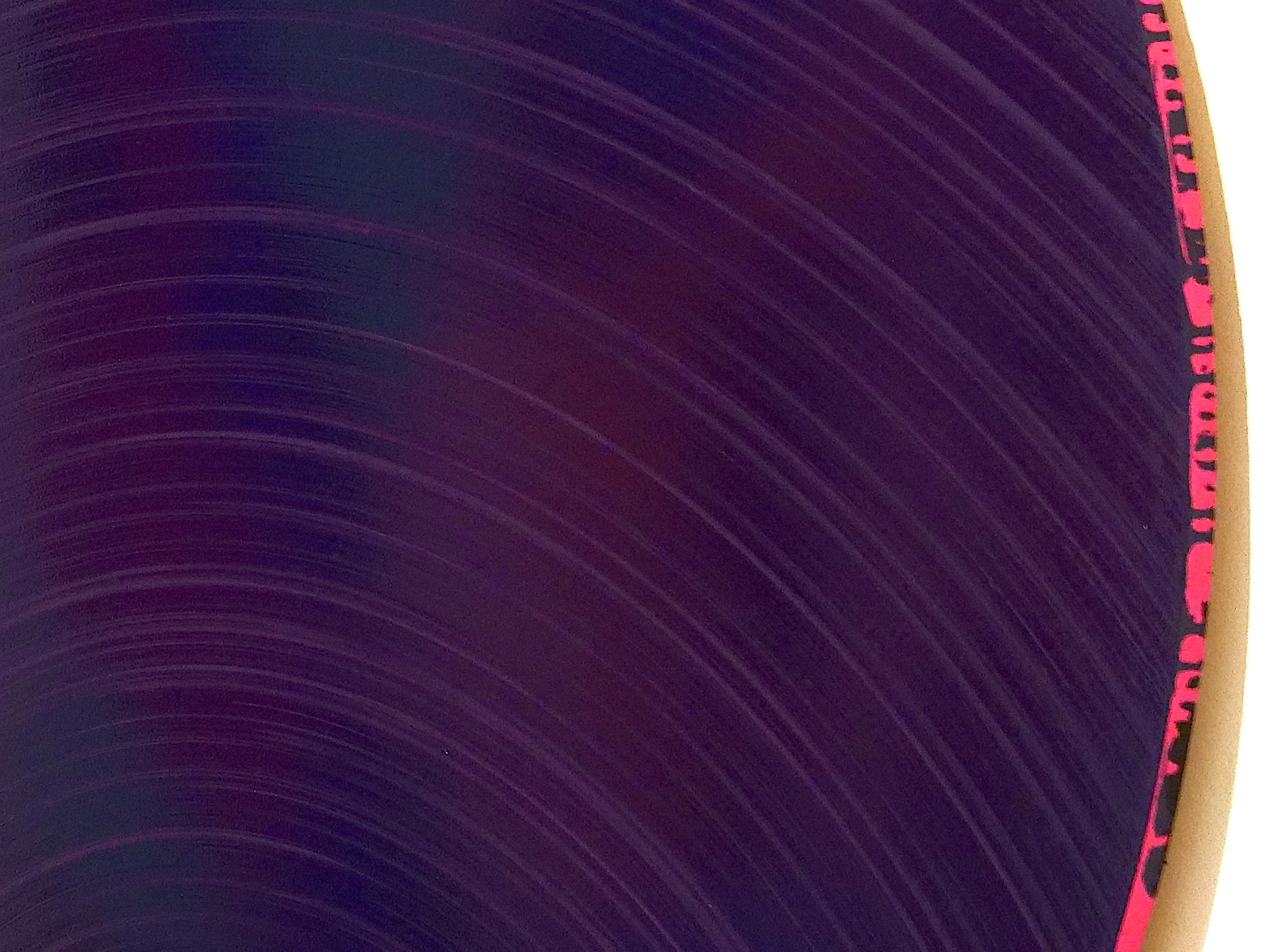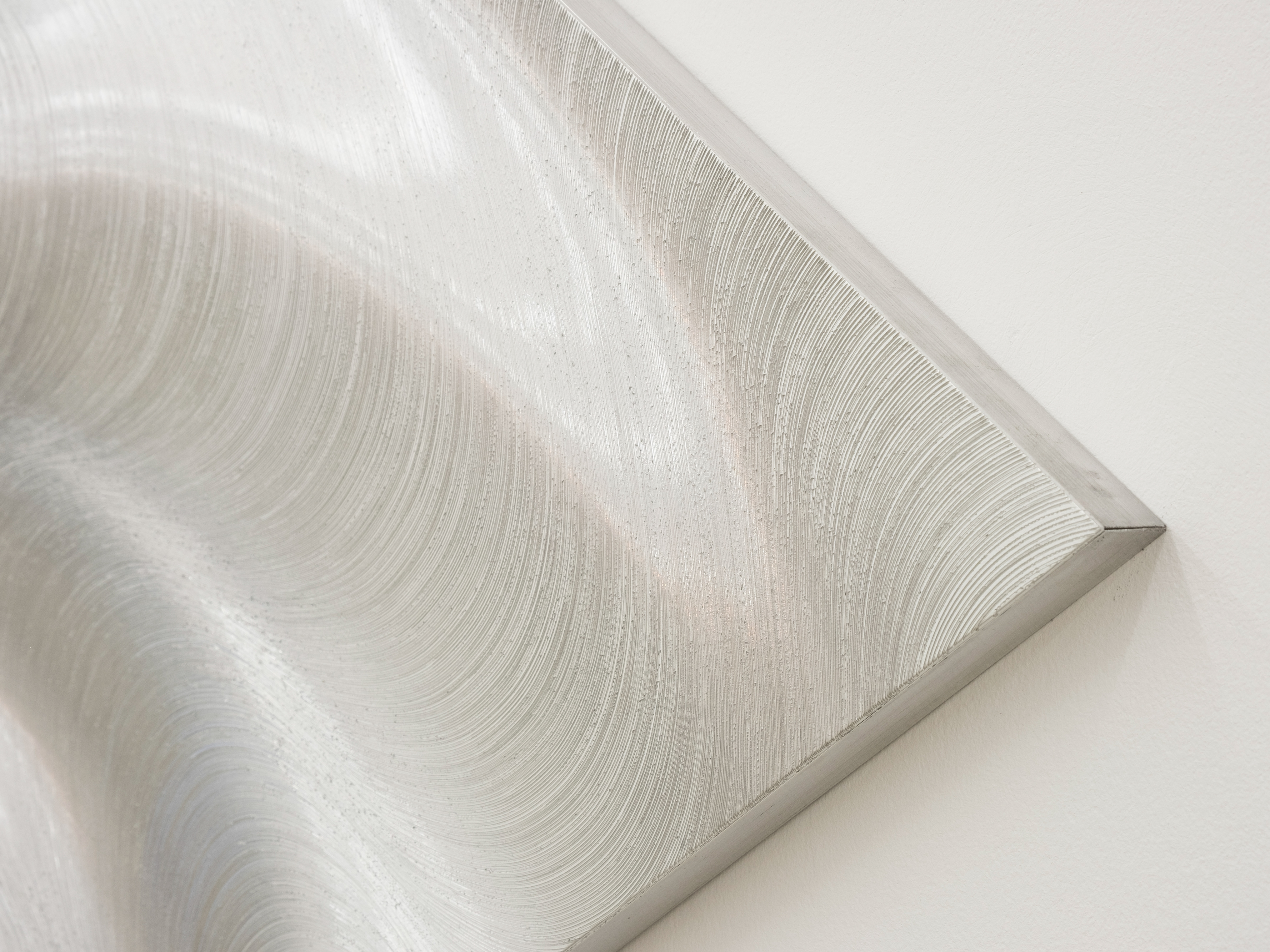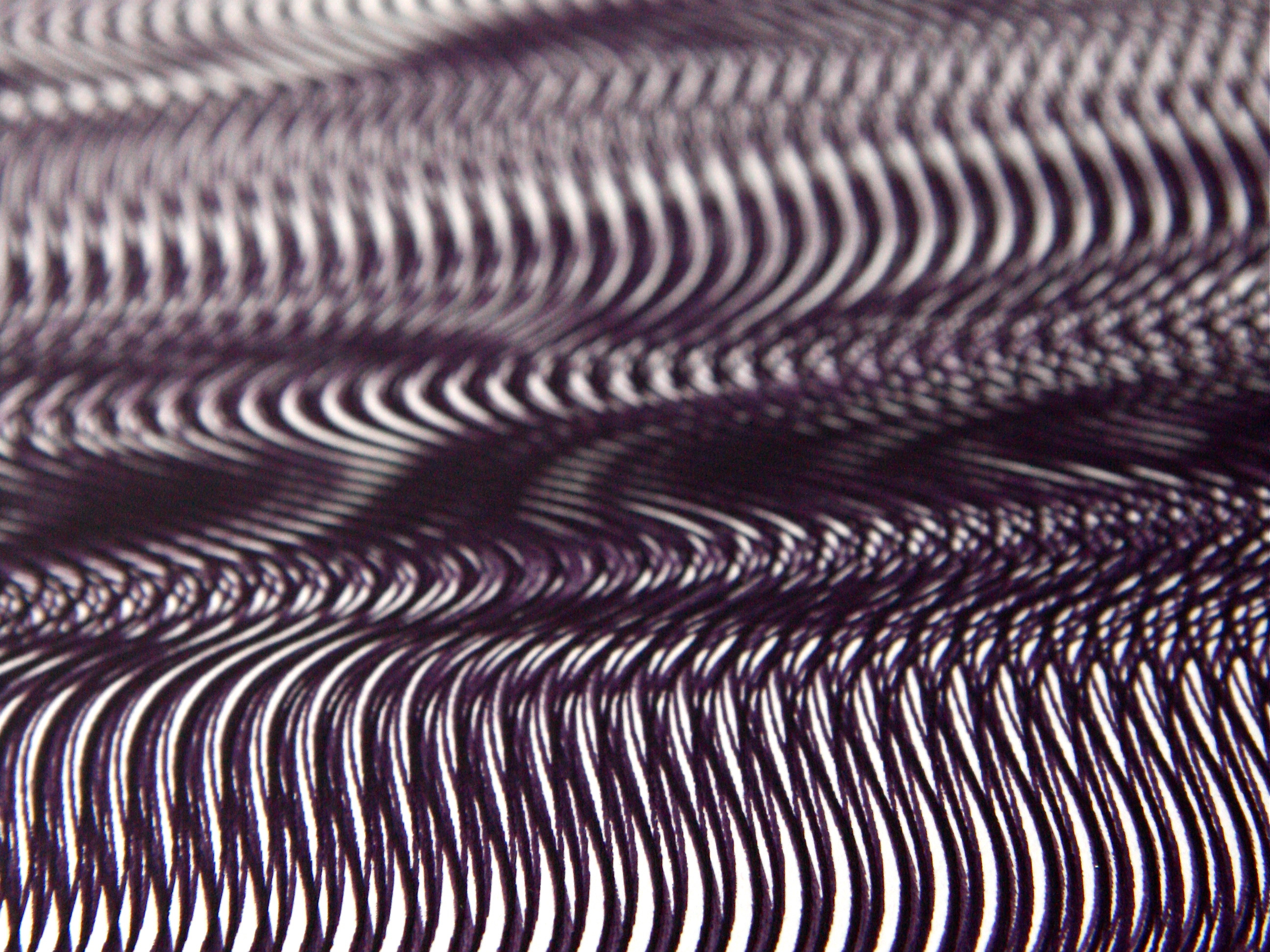This body of work utilises a generative process out of which a unique composition emerges. Initially, a fixed set of anchor points are mapped onto the canvas in the form of a grid and a set of regularly spaced integers marked along the edges. Next, a tool is made by drawing out an automatic, spontaneous line which is then cut out to form a guide. The guide is then set with the end point of the line registered to the first grid point and positioned such that it makes contact with the top left corner which counts as the first integer spanning the edges of the canvas.
Using pure graphite, this line is carefully drawn out. Then keeping the guide line set on the first grid point, it is rotated until it hits the next integer along the canvas edge as which point it is stopped and the next line drawn out. This process is repeated for as many times as is required in order to account for every grid point and every integer, so in effect, every set of anchor points is connected with the line.
Due to the inconsistency of the guide line, it does not rotate evenly around the grid points but wavers back and forth in a sporadic yet predetermined way. The resulting formation of lines is a visual record of how that particular line interacted with the fixed grid, and while on the one hand they may seem random, one does discern an order coalescing out of the vibration of lines. These drawings are caught between the spontaneity of one thing the the rigidity of the other,
"Invariant Formation: No IV", graphite on canvas, 122 x 122cm, 2017
"Invariant Formation: No III" graphite on canvas, 122 x 122cm, 2008.
"Invariant Formation: No II", graphite on canvas, 122 x 122cm, 2008.
"Invariant Formation: No I', graphite on canvas, 122 x 122cm, 2008.
